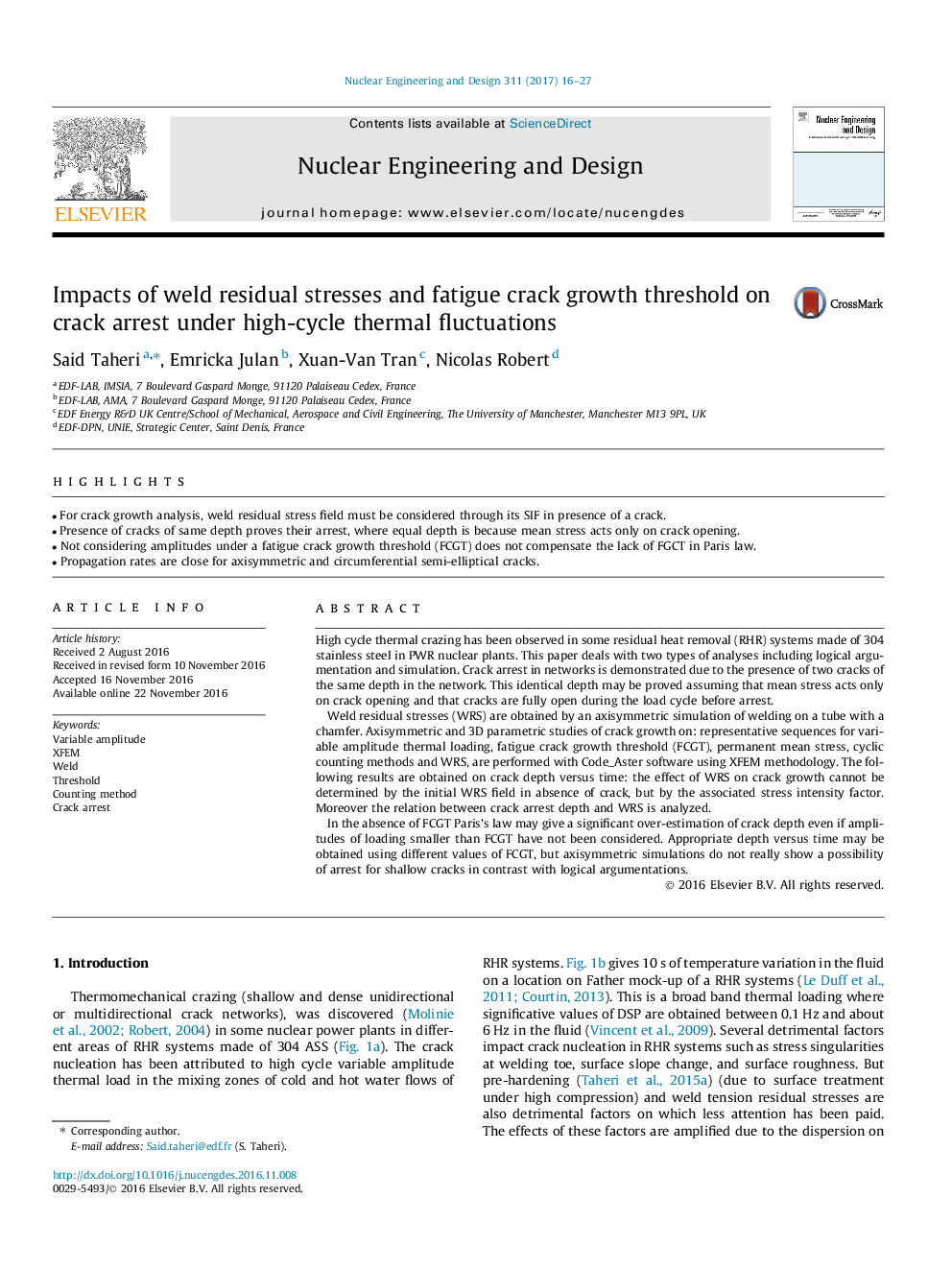| کد مقاله | کد نشریه | سال انتشار | مقاله انگلیسی | نسخه تمام متن |
|---|---|---|---|---|
| 4925721 | 1431410 | 2017 | 12 صفحه PDF | دانلود رایگان |
- For crack growth analysis, weld residual stress field must be considered through its SIF in presence of a crack.
- Presence of cracks of same depth proves their arrest, where equal depth is because mean stress acts only on crack opening.
- Not considering amplitudes under a fatigue crack growth threshold (FCGT) does not compensate the lack of FGCT in Paris law.
- Propagation rates are close for axisymmetric and circumferential semi-elliptical cracks.
High cycle thermal crazing has been observed in some residual heat removal (RHR) systems made of 304 stainless steel in PWR nuclear plants. This paper deals with two types of analyses including logical argumentation and simulation. Crack arrest in networks is demonstrated due to the presence of two cracks of the same depth in the network. This identical depth may be proved assuming that mean stress acts only on crack opening and that cracks are fully open during the load cycle before arrest.Weld residual stresses (WRS) are obtained by an axisymmetric simulation of welding on a tube with a chamfer. Axisymmetric and 3D parametric studies of crack growth on: representative sequences for variable amplitude thermal loading, fatigue crack growth threshold (FCGT), permanent mean stress, cyclic counting methods and WRS, are performed with Code_Aster software using XFEM methodology. The following results are obtained on crack depth versus time: the effect of WRS on crack growth cannot be determined by the initial WRS field in absence of crack, but by the associated stress intensity factor. Moreover the relation between crack arrest depth and WRS is analyzed.In the absence of FCGT Paris's law may give a significant over-estimation of crack depth even if amplitudes of loading smaller than FCGT have not been considered. Appropriate depth versus time may be obtained using different values of FCGT, but axisymmetric simulations do not really show a possibility of arrest for shallow cracks in contrast with logical argumentations.
Journal: Nuclear Engineering and Design - Volume 311, January 2017, Pages 16-27
